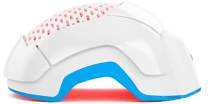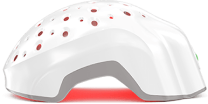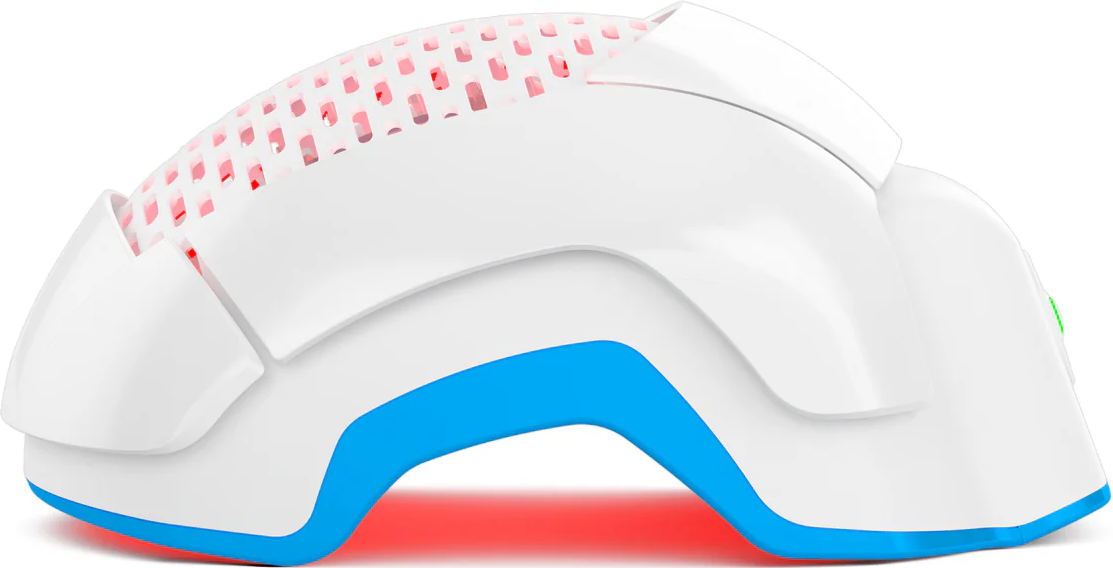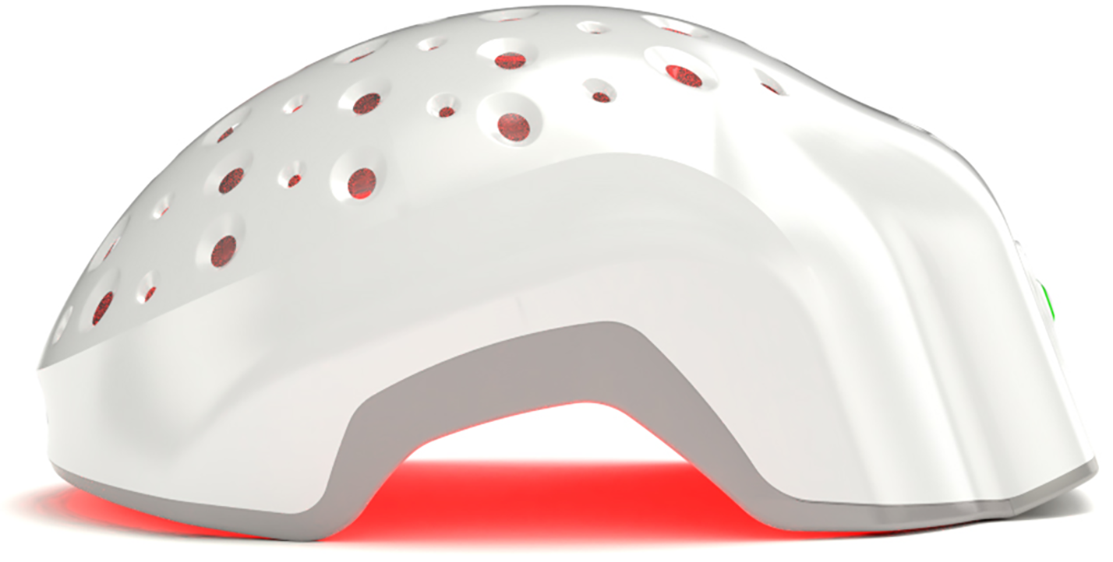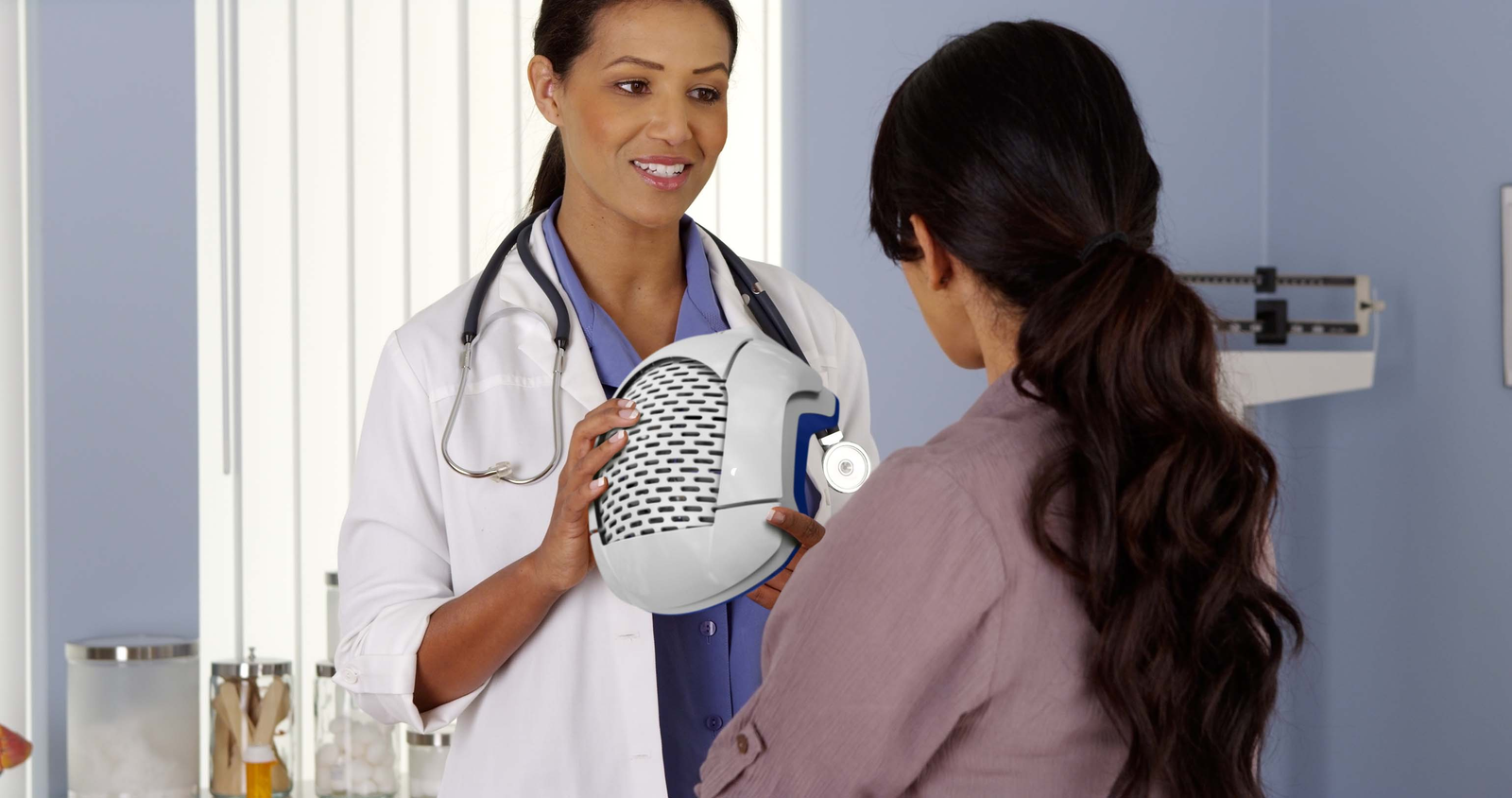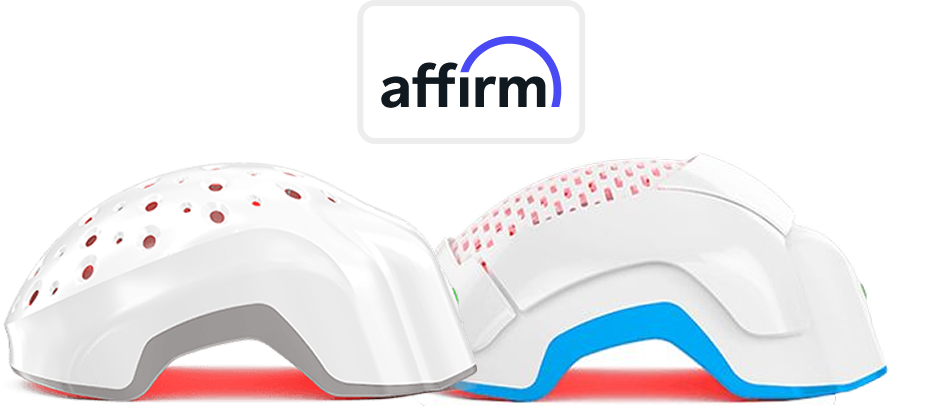Having a luscious, vibrant mane is considered a symbol of beauty and vitality. The hair defines your style, personality, and presentation of who you are. Unfortunately, many people struggle with unhealthy hair. Unhealthy hair can manifest in various forms, from dullness and split ends to excessive hair shedding and breakage.
Understanding the basics of hair health is necessary to address the issues related to unhealthy hair. The health of your hair is influenced by many factors, which include lifestyle, diet, genetics, and how you take care of your hair. But before taking proper care, you need to find the signs of unhealthy hair, like dryness and brittleness. In this blog, we'll explore the signs of unhealthy hair and also compare healthy vs unhealthy hair. We'll also examine the common causes & signs of unhealthy hair and provide practical tips for maintaining and restoring hair health.
Healthy Hair vs Unhealthy Hair: How to Tell Your Hair Health

Understanding the differences between unhealthy and healthy hair is crucial for effective hair care and maintenance. Healthy and unhealthy hair can be easily distinguished based on appearance and condition. Here, we have breakdown the five major differences:
1. Appearance
When identifying healthy and unhealthy hair, appearance is one of the most noticeable differences. Healthy hair looks shiny and vibrant. It reflects light and has a smooth, even surface, giving it a sleek look that’s easy to style and manage. Healthy hair also holds its color well, whether natural or dyed and maintains a fresh, lively look.
Unhealthy hair, on the other hand, appears dull and lifeless. It often looks dry or frizzy, and the ends may seem rough or split. Unhealthy hair struggles to hold its shape, and the color may fade quickly, especially after exposure to heat or chemicals. This difference in appearance is a clear sign that the hair needs more care and nourishment.
2. Texture
You can differentiate healthy hair from damaged hair by feeling the texture. Healthy hair feels smooth and soft when you run your fingers through it. The strands are even, and there’s no roughness or coarseness. This smooth texture makes healthy hair easy to style and less prone to tangling, giving it a silky, manageable feel.
Unhealthy hair, however, has a rough or brittle texture. It can feel dry and uneven, with frizzy or coarse areas. The rough texture makes the hair harder to comb, more likely to tangle, and often results in breakage. The damaged texture is usually caused by over-styling, heat, or lack of proper hair care.
3. Scalp Health
Scalp health is crucial in determining whether your hair is healthy or unhealthy. A healthy scalp is clean, well-hydrated, and free from issues like dandruff, redness, or excessive oiliness. The balanced environment allows hair follicles to function properly, leading to strong, shiny, and resilient hair.
An unhealthy scalp can lead to problems that affect hair health. Issues like dryness, excessive oiliness, or dandruff can create an uncomfortable feeling and may even cause hair to fall out. An unhealthy scalp can hamper hair growth and lead to weak or damaged hair.
4. Strength
Healthy hair is strong and resilient. It can withstand styling and everyday wear without breaking easily. When you pull on healthy hair, it stretches slightly and then returns to its original shape. The strength of healthy hair prevents split ends and damage, allowing your hair to look vibrant and full of life. Strong hair can handle heat from styling tools and environmental factors better than weak hair.
On the other hand, unhealthy hair is often weak and brittle. It breaks easily when brushed or styled, leading to more split ends and frizz. Weak hair may feel thin and fragile, making it difficult to manage. When hair lacks strength, it can become dull and lifeless.
5. Hydration
Hydration is an important factor in identifying healthy versus unhealthy hair. Well-hydrated hair with enough moisture to stay soft and flexible is a clear sign of healthy hair. When hair is properly hydrated, it looks shiny and feels smooth to the touch.
Unhealthy hair often appears dry and dull due to a lack of hydration. When hair lacks moisture, it can feel rough and brittle, leading to breakage and frizz. Dry hair is more prone to tangling and can be difficult to brush or style.
Read More: How to Tell If Your Hair is Thick or Thin
Side-By-Side Comparison of Healthy Vs Unhealthy Hair
Comparing healthy vs unhealthy hair side by side can be a helpful way to pinpoint the specific issues affecting your hair. By understanding the key differences, you can tell if your hair is healthy or if there are any underlying problems that need attention. Here's a clear comparison to help you determine the health of your hair.
| Factors | Healthy Hair | Unhealthy Hair |
|
Appearance |
Healthy hair appears shiny, lustrous, and vibrant |
Whereas unhealthy hair appears dull and lifeless |
| Texture | Soft, smooth, and silky | Rough, brittle, and dry |
| Scalp Health | Balanced, moisturized, and not itchy | Dry, flaky, and itchy |
| Strength | Strong, resilient, and resistant to breakage | Weak, prone to breakage and split ends |
| Hydration | Well-moisturized and hydrated | Dry, dehydrated, and prone to frizz |
| Hair Loss | Minimal shedding and healthy hair growth | Excessive hair loss and slow hair regrowth |
How Do You know If Your Hair is Damaged?

Detecting damaged hair involves assessing various signs and characteristics of your hair. Also, it is the first step toward restoring its health and vitality. While you cannot directly examine the hair follicles, there are visible signs of unhealthy hair to look for.
10 Signs That Tell Your Hair Is Unhealthy
Unhealthy hair can manifest in various ways, indicating underlying issues with your hair and scalp health. Here are some common signs of unhealthy hair type:
1. Dryness and Brittleness:
Dryness and brittleness are clear signs of unhealthy hair. When your hair lacks moisture, it becomes dry, making it feel rough and straw-like. Dry hair is vulnerable to breakage, which contributes to brittleness. Brittle hair is weak, making it more prone to damage and further breakage. Both dryness and brittleness can make your hair look dull, lifeless, and difficult to manage.
Also Read: How to Differentiate New Hair Growth and Breakage
2. Split Ends:
Split ends are a clear indicator of unhealthy hair. When the tips of your hair become dry and brittle, they separate into two or more hair strands. Split ends occur due to damage and lack of proper care. Regular trims and moisturizing treatments can help prevent and reduce split ends, keeping your hair healthy and strong.
3. Excessive Hair Shedding:
It’s normal to lose some hair each day. However, excessive hair shedding could indicate an underlying health issue or improper hair care.
Find out how you can stop hair shedding.
4. Dull Appearance:
If your hair lacks shine and looks lifeless, it may have a dull appearance, a sign of unhealthy hair. Dull hair appearance can be caused by various factors, such as damage, excessive heat styling, or lack of proper hydration. Using nourishing hair products, minimizing heat exposure, and maintaining a balanced diet can help restore your hair's natural shine and vitality.
5. Excessive Oiliness
Hair that's too oily can be a sign of unhealthy hair. When your scalp makes too much oil, it can leave your hair looking greasy and flat. The extra oil can also trap dirt and make your hair smell bad. Oily hair is hard to style and may need washing more often. While some oil is good for your hair, too much can be problematic. It might mean your scalp is out of balance, or you're using the wrong hair products. Also, excessive oil on hair can be due to hormonal changes and poor diet.
6. Scalp Issues:
Dandruff, itchiness, or flakiness are the symptoms of scalp issues, which are the clear signs of unhealthy or damaged hair. Factors like dryness, underlying skin conditions, or product buildup, such as over toning, can cause scalp issues and damage the hair.
7. Thin or Thinning Hair:
Hair that is noticeably thin or experiencing excessive hair loss may indicate that you have unhealthy hair. Hair thinning can be due to a number of factors, such as nutritional deficiencies, hormonal imbalances, or genetic factors.
8. Lack of Elasticity:
Healthy hair should stretch a bit when you pull it and then bounce back to its original shape. If your hair doesn't do this, it might be damaged. Unhealthy hair breaks easily when you stretch it, doesn't spring back after being pulled, and lacks elasticity. When hair loses its elasticity, it might be weak and more prone to breakage.
9. Color Changes or Fading:
The last sign of damaged/unhealthy hair is prone to color changes or fading. Exposure to harsh chemicals in hair products, excessive sunlight, or inadequate hair care can cause hair color to fade or change.
Learn More: What Causes Premature Greying of Hair?
10. Frequent Tangling
Hair that gets tangled a lot can be a sign it's unhealthy. When hair is in good shape, it's smooth and doesn't knot up much. But unhealthy hair often gets messy and knotted easily. You might notice your hair gets all twisted up soon after you wash it, or it's hard to brush without hitting snags. Tangling occurs because damaged hair has a rough surface, making strands stick together.
Common Causes of Unhealthy Hair

Unhealthy hair can be attributed to various factors, which include a poor diet, lack of hydration, overuse of hair care products, excessive heat styling, overuse of chemical treatments, neglecting a regular care routine, and chronic stress. Here are some common causes of unhealthy hair:
Impact of Diet on Hair Health
The food we consume plays a crucial role in the health of our hair. A diet that lacks essential nutrients like vitamins and minerals can lead to weak and dull hair. Ensuring a balanced diet with adequate protein, vitamins (especially A, C, D, and E), iron, and omega-3 fatty acids is key to maintaining healthy hair.
Importance of Hydration
Dehydration can make hair brittle and more prone to breakage. Adequate water intake is vital for maintaining hair health and overall body hydration, including the scalp.
The Role of Hair Care Products
Overusing or misusing hair products with harmful chemicals, like Parabens can damage the hair shaft and scalp, contributing to unhealthy hair. Opt for natural or gentle products and be mindful of the ingredients in your hair care regimen.
Excessive Heat Styling
Frequent use of healing tools like straighteners and curling irons can weaken the hair, causing it to become more dry and brittle. Limit the use of these tools and use a heat protectant spray.
Overuse of Chemical Treatments
Chemical treatments, such as perming, coloring, and relaxing, can cause significant damage to the hair structure if done excessively. Space out these treatments and ensure that your hair receives proper care and conditioning afterward.
Lack of Proper Hair Care Routine
One of the primary causes of unhealthy hair is a lack of a proper hair care routine. Neglecting a regular hair care routine, including washing, conditioning, and protecting, can lead to dirt and oil accumulation, making the hair unhealthy. You must develop a consistent hair care routine that suits your hair type and needs.
Stress and Its Effect on Hair
Chronic stress can disrupt the hair growth cycle, leading to excessive shedding and thinning of hair. Manage stress through relaxation techniques, exercise, or seeking professional help. These things can positively impact hair health.
How to Treat Unhealthy Hair
Healthy hair involves good hair care practices, a proper balanced diet, and a healthy lifestyle. Here are some tips for unhealthy hair treatment and prevention:

Regular Washing and Conditioning
Wash your hair regularly with a gentle, sulfate-free shampoo to remove dirt, excess oil, and product buildup. Also, condition hair after every wash to keep it moisturized and manageable. Regular washing and conditioning can help detoxify your hair and maintain healthy hair.
Avoid Overwashing
Regular washing is important, but you should avoid washing your hair excessively since it can strip the natural oils from your hair and scalp that protect them.
Protect Your Hair from Heat
Limit the use of heated styling tools like straighteners, curling irons, and hair dryers. When you do use them, use a heat protectant spray.
Avoid Tight Hairstyles
Avoid tight ponytails, buns, or braids that can cause tension and breakage.
Balanced Diet
Eat a balanced diet that is rich in vitamins and minerals, including vitamins A, C, D, E, and B-complex vitamins, as well as minerals like zinc and iron.
Stay Hydrated
Drink plenty of water to keep your hair and scalp hydrated.
Protect Your Hair from the Sun
Wear a hat or use hair products with UV protection to shield your hair from sun damage. Sun damage can cause hair loss. Find out more.
Avoid Chemicals and Harsh Ingredients
Minimize the use of harsh chemicals in shampoos and treatments, such as perms, relaxers, and excessive hair coloring.
Stress Management
Manage stress through relaxation techniques like yoga, meditation, or deep breathing, as stress can adversely affect hair health.
Regular Exercise
Engage in regular physical activity to improve circulation, which can benefit the health of your scalp and hair.
Read More: 7 Hair Growth Tips for Sexy Hair
How Theradome Can Help Your Hair Fall from Unhealthy Hair
Theradome laser hair growth helmet can be an option if you are losing hair. Theradome helps stimulate hair growth using LLLT (Low-light Laser Therapy). The hair growth helmet can help you counter several forms of hair loss and improve the quality of your hair.
Take a step towards healthier, fuller hair with Theradome. Discover the potential of low-level laser therapy to revitalize and regrow your hair. Consult a professional and embark on your journey to stronger, more vibrant hair today. Don't wait—start your Theradome experience now and embrace a future of healthier, thicker locks!
Conclusion
Maintaining healthy hair is crucial for both appearance and overall health. But for proper healthy hair, you must learn to identify unhealthy hair. The signs of unhealthy hair include dryness and brittleness, split ends, excessive hair shedding, and a dull appearance. These issues can be caused by various factors, such as poor diet, dehydration, and excessive use of hair care products. The main difference between healthy and unhealthy hair is that healthy hair looks shiny, feels smooth, and stays strong, while unhealthy hair looks dull and rough. Healthy hair is easy to style and grows well, but unhealthy hair breaks easily and might cause scalp problems. By knowing these differences, you can take better care of your hair and keep it looking its best.
Furthermore, you can treat your unhealthy hair with a proper hair care routine, such as regular washing, protecting from heat, avoiding tight hairstyles, and maintaining a balanced diet. Besides them, you can explore innovative solutions like Theradome's laser hair growth helmet, which can further aid in regrowing hair, leading to healthier and fuller locks.


